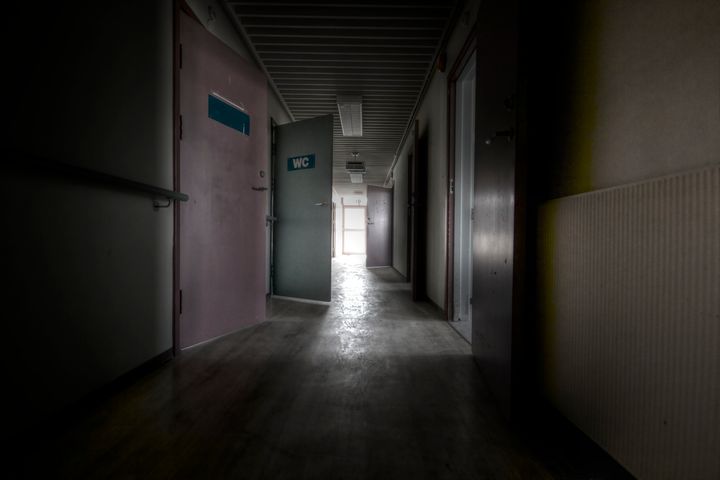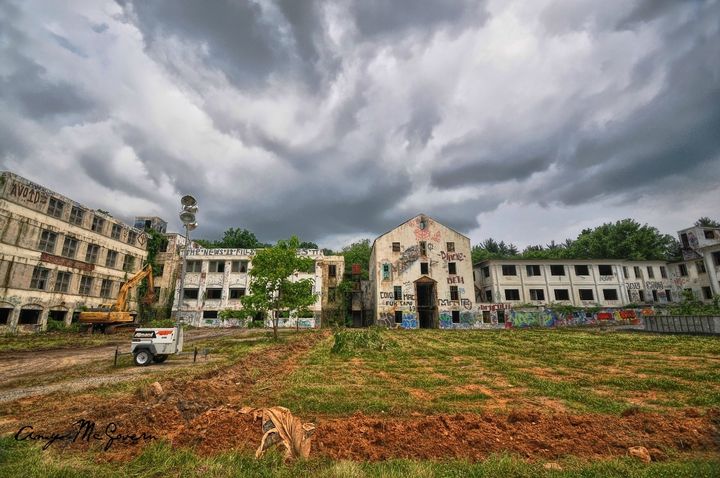If you ask most people what a mental health inpatient facility looks like, there’s a good chance that they would reference psychiatric hospitals and asylums: white walls, padded rooms, haunting hallways, electro-shock therapy, and straightjackets. With examples like those seen in Girl, Interrupted or American Horror Story, it’s hard to imagine inpatient psychiatric care free from unsanitary, confining, and often frightening conditions.
To be fair, these pictures of psychiatric hospitals aren’t inaccurate—at least not before the 1970s and 1980s, when medical and legal trends moved towards deinstitutionalization, when centers were closed and…. Yet, simply closing these facilities did not eliminate the need for inpatient psychiatric care—it just changed the model. So we’re left with the question: what does this new model look like?
To learn more about the evolution of inpatient mental health care and the modern facilities housing long-term patients, I spoke with Dr. Jeff Ball and Dr. Terry Krekorian, CEOs and Founders of the PCH Treatment Center in Los Angeles, Dr. Itai Danovitch, Head of Psychiatry at Cedars-Sinai in Los Angeles, and Dr. Gerber, CEO and Medical Director at the Austen Riggs Center in Stockbridge, Massachusetts.

It’s impossible to consider the current state of mental health inpatient facilities without first understanding the history behind the original asylum model.
As Dr. Gerber explained, this begins with the diagnosis:
“If you think about what the state of psychiatry was 60 years ago, it’s almost unimaginable, when we think about what psychiatry is today. The very first issue is, the most common reason for someone being psychiatrically hospitalized is not even a diagnosis we give anymore: neuroSyphilis.”
That’s right—psychiatric hospitals originated from a need to house the massive amounts of patients who were contracting Syphilis, and who, left untreated, ended up with an infection that resulted in severe and irreversible brain damage. Eventually, actual psychiatric patients, such as those with depression, schizophrenia, or severe personality disorders, were hospitalized right alongside those with “psychiatric” symptoms caused by neuroSyphilis—with very little difference in care.
As Dr. Danovitch noted, the trend became to institutionalize virtually anyone with a disorder not understood or treatable by medical practice. It was not a last-resort option, it was the only option.
The over reliance on institutions and gross misunderstanding of these patients resulted in overcrowding and often deplorable conditions during the 1950s and 1960s—the setting for most pop culture references to inpatient care.
Yet with the introduction of medication for both Syphilis (a simple antibiotic) and psychiatric disorders (such as thorazine, tricyclics, and lithium), the pressure on institutions—and the use of them as a catch-all solution—began to subside. For the patients that were left—those who had long-term, chronic psychiatric illnesses not well managed by medication—it quickly became clear that they did not respond well to asylum-style care. Thus, the movement became towards deinstitutionalization and moving patients into community care facilities.
However, Dr. Gerber noted that it wasn’t quite that simple:
“The problem was, that just as they were closing down the asylums and institutions, the other programs were not adequately funded. The money dried up and so the community healthcare programs that were supposed to be funded by the closing of the asylums never really took off.”
The result? Patients were often left without care options, in a system that both didn’t understand and didn’t account for their needs.

By the 1980s, a few facilities—including those at Harvard and Yale, and Dr. Gerber’s own Austen Riggs Center—emerged as forerunners in the new wave of inpatient care; these facilities had endured through the rise and fall of asylums and had a clear understanding of what did and didn’t work for psychiatric patients. Effectively, these facilities have replaced institutions, serving the most chronically ill patients who need long-term care—where they are offered medication, various treatment options, and hope for rehabilitation.
But there still existed a large population of psychiatric patients lost “in the middle:” high-functioning patients who require less restrictions or monitoring than hospitals provide but more care than is accessible via outpatient therapy.
Enter residential facilities, like the PCH Treatment Center. As Dr. Ball explains, these facilities are built specifically as an option for these “in between” patients and focus on rehabilitation, life skills, and preparing patients for re-integration into the community:
“We wanted to create a model within a community—our residences are separate from where we do treatment, because we wanted to create something that reflects the real world. So we created a safe, comfortable house where patients stay, and then office-type treatment facility.”
In fact, these facilities are built on a model similar to those of the luxury programs well-known for their work in addiction treatment. Perhaps not all are as high-end as PCH Treatment Center, where patients live in a stunning mansion with a pool and live-in chef and attend eight hours of activities per day in the heart of Los Angeles, but most operate on the same principles of compassionate and progressive care.
These facilities share some other important characteristics—or, more importantly, they lack certain characteristics, including many of the markers of institutions that we’ve come to associate with inpatient care, such as straight jackets and sterile white hallways. Many feature single rooms, luxury facilities, and a range of therapeutic courses and resources, and offer patients freedom to explore the community and check themselves out if desired.

But it’s not only the structure and style of these facilities that has evolved since the institutions of the past—the treatment has also changed.
For a while, we saw what Dr. Ball coined as the transition from “physical straitjackets to pharmacological straightjackets:” In the excitement concerning emerging pharmaceutical options—a long-awaited medical development that significantly changed the treatment of psychiatric patients—the system ended up with a profound over reliance on medication, an issue only furthered by the well-documented power of big pharma.
For many of the modern residential facilities, such as PCH, the treatment model is often what Dr. Ball said their marketing team refers to as one of “treat[ing] skills, not pills.” This facility in particular uses medication, but in a way that they characterized as “appropriately and in as low dosage as possible.” Many, like PCH, have also stopped prescribing certain controversial drugs, such as Benzodiazepines or Adderall.
This shift in a philosophy of medication for is in part a factor of an overall shift in mentality towards psychiatric disorders. Over the past 10 years or so, we’ve seen a movement towards reducing stigma and rehabilitating patients, instead of either shutting them away in institutions or medicating them in a way that serves simply as a Band-Aid for the problem, instead of a way that works in conjunction with other types of therapy to help patients understand and combat their struggles.
I say struggles, in fact, because Dr. Ball himself mentioned a dislike of the term “illness” altogether:
“We don’t look at what’s wrong with someone as much as what happened to bring them to this place that they need help with. Our focus is non-pathologizing, [...] and we don’t treat people like they’re sick. We treat people like they are adults that have run into problems.”
With the breadth of diagnoses and the prevalence of psychiatric disorders—in America, 1 out of 5 adults suffer from mental illness each year—it does seem to be that (surprise!) people with that require inpatient care are, at the end of the day, people just like you and I. As Dr. Ball noted, “you can’t cure the human condition,” and as Dr. Gerber confirmed, “[these patients] are more like us than they are different.”

But it’s not all positive progress and innovation when examining the new wave of inpatient treatment facilities and practices—because, to put it simply, not everyone can afford a place like Austen Riggs or PCH. Unfortunately, insurance has not yet caught up with the progress being made in this sector of healthcare.
Both PCH and Austen Riggs—along with the vast majority of inpatient facilities currently operating—are private, meaning that patients pay out-of-pocket upfront and can apply for insurance reimbursements, with the help of the residencies themselves, afterwards. Cedars-Sinai, which does not have an inpatient center specifically for mental health but will treat psychiatric patients that come in, operates on a similar payment model.
Dr. Danovitch explained that although the public perception of mental health is beginning to shift, the perspective from the side of insurance companies is not:
“Until very recently, and even still now, insurances have tried to reduce their cost by reducing the benefits they offer to patients. It’s been easiest to do that around mental health, because there’s not historically a strong advocacy around people getting their mental health benefits.”
Though healthcare reform has helped, mental health benefits still lag far behind the level of regular benefits—and behind the evolving psychiatric care system. Thus, these facilities don’t take insurance not due to a lack of wanting or trying to—instead, it’s due to the limits on care imposed by insurance companies, including a predetermined, limited number of inpatient days or outpatient treatments.
For patients in need of residential care, this often means they’re left to decide—if they even have that luxury—to either pay out of pocket or not receive the care they need. For others—especially those who enter psychiatric care via a hold, for instance—it could mean being forced out of a hospital far before they are ready to reintegrate into their community; while the private sector may be filling up with additional options, the public sector lags far behind in options for psychiatric treatment.
All in all, it’s clear that, if we know one thing, it’s that mental health care is a’changing…mostly for the good.
After all, the idea of shutting down asylums and deinstitutionalizing inpatient care is, as Dr. Danovitch noted, “a positive and welcome change.” Yet while we’ve made some serious progress in public perception, treatment, and philosophy of mental illness—in the elimination of institutions, a further understanding of medication, and a shift towards inpatient care based on an integrative and rehabilitative model—we’re far from offering the same benefits and access to patients with psychiatric disorders as are offered with physical disorders: inpatient or not.
